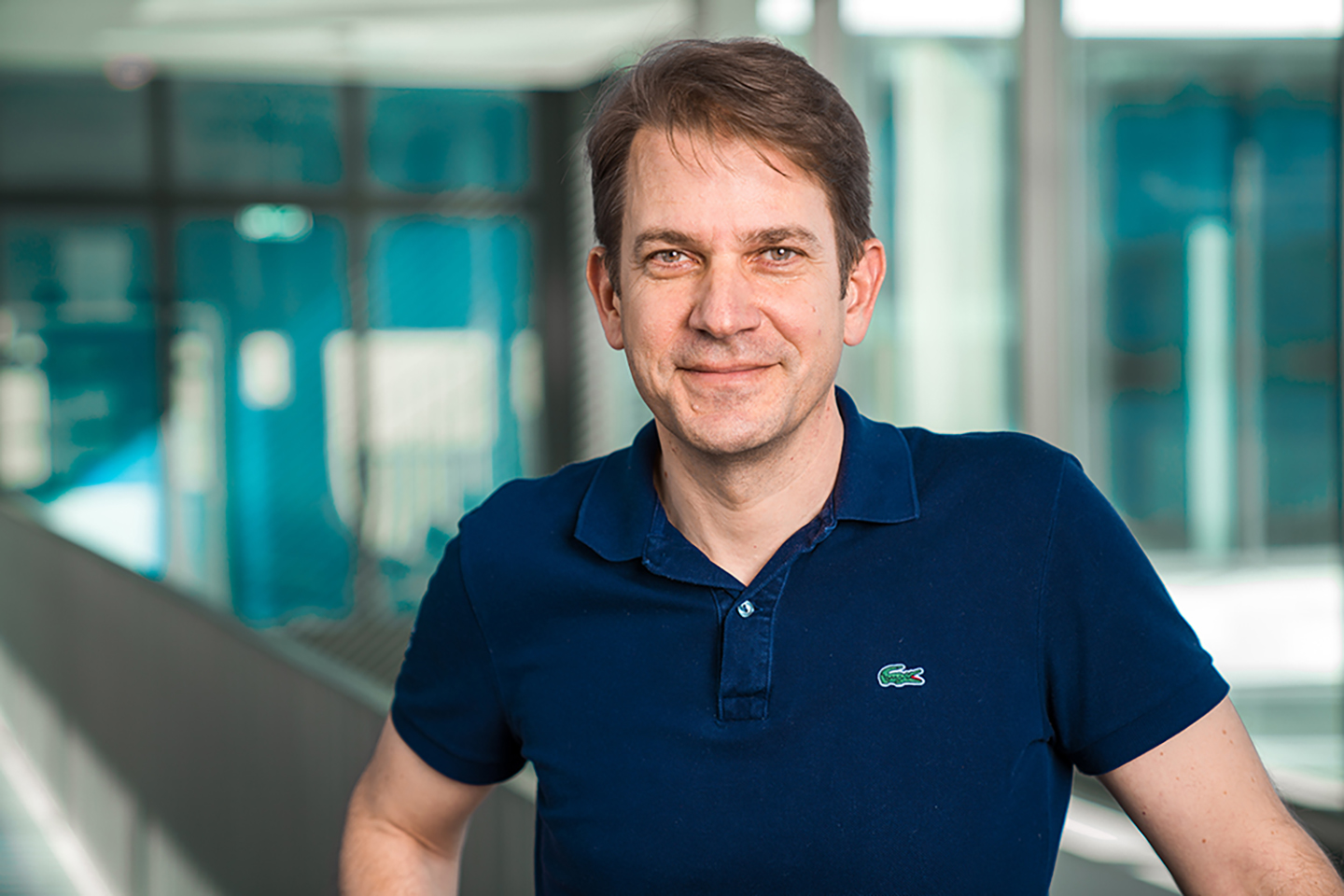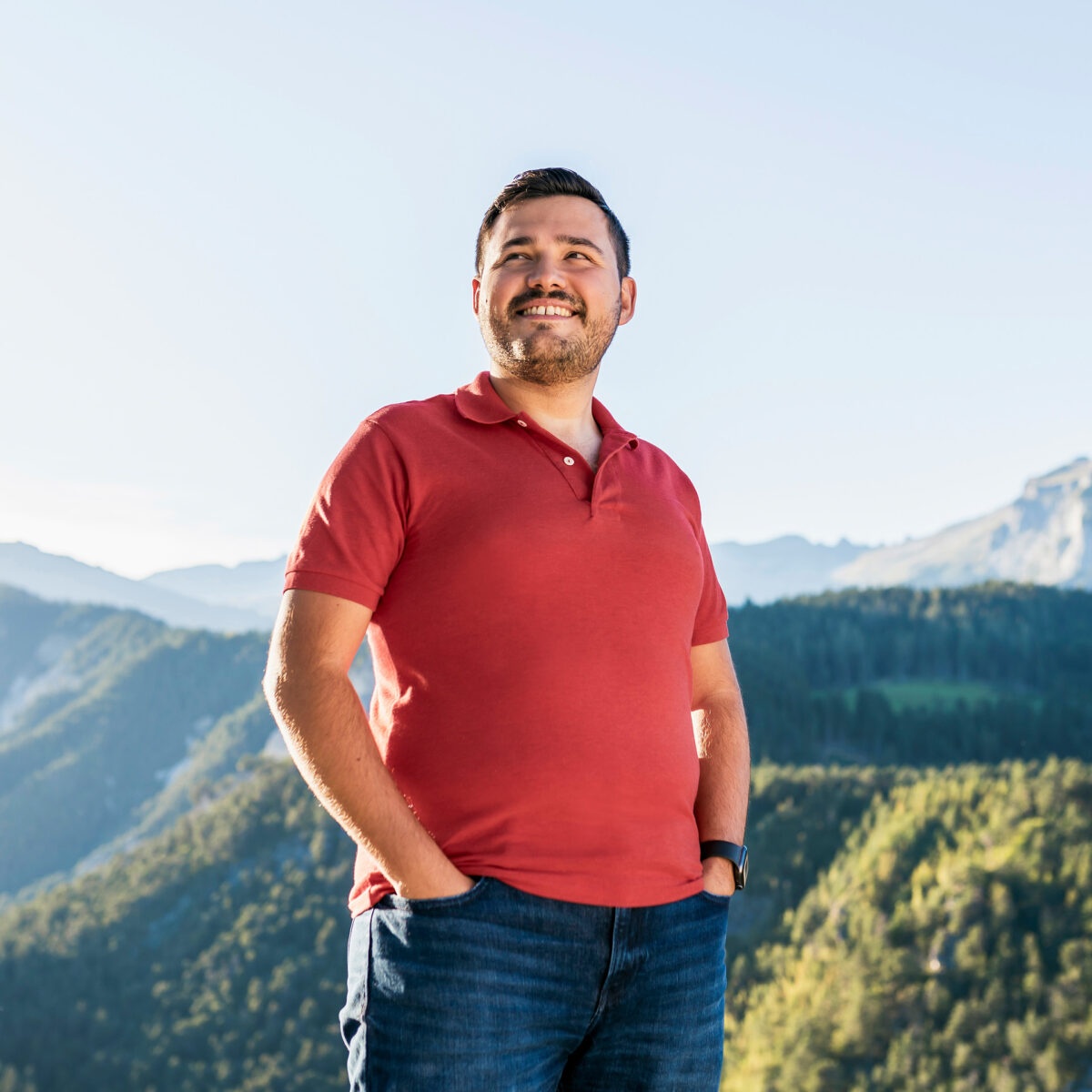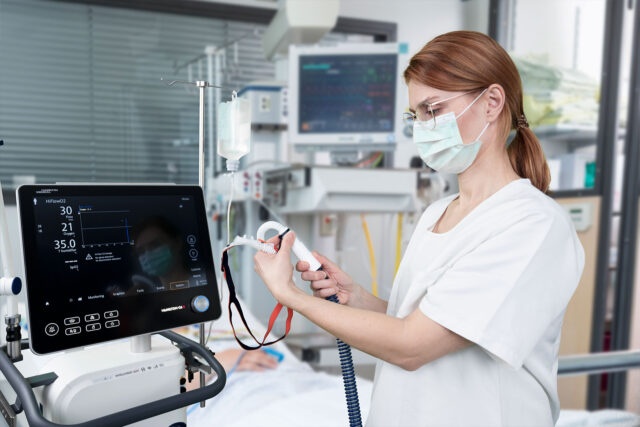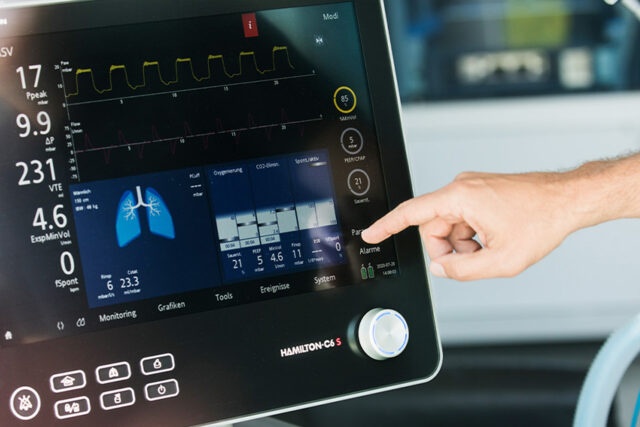I live out my artistic, romantic side in music and my serious side at work.
Graubünden Air for the World
Since at least the time of Swiss Federal Councilor Berset’s visit to view Hamilton Medical’s production facility during the lockdown, it has been well known within Switzerland that ventilators are produced in Graubünden for the entire world. What sets the Hamilton companies apart from other companies? Focus and innovation.
If you were to visit the impressive Hamilton Medical buildings in Bonaduz and Domat/Ems, you would see production halls, fully and semi-automated machinery, and people clothed in white lab coats working with focused diligence – on nothing less than the very air we need to breathe. Since 1983, Hamilton Medical – a Hamilton company – has been producing ventilators for use in intensive care medicine. And anyone who thinks that ventilators are essentially no different from automated bicycle pumps is not completely off the mark, chuckles Alexander Starcevic, Director of Marketing: “Frequency, volumes and pressure are important parameters in both bicycle pumps and ventilators. The complex factor in the case of a ventilator is obviously the fact that, for each patient, individual clinical values need to be attained, particularly the level of oxygen and carbon dioxide (CO2) in the blood. To achieve this, the ventilator must be set with the correct values for the respiratory rate and pressure or volume. At the same time, the ventilation must be administered in the most lung-sparing manner possible.” So much for bicycle pumps then.

Exceptional Conditions
In Graubünden, cutting edge technology devices are manufactured that save lives on a daily basis; Hamilton Medical is “one of the big three” in the industry. The coronavirus crisis generated a level of demand that “can actually no longer be satisfied”, states Starcevic. “It simply isn’t possible to ramp up production tenfold overnight.” And yet, in this year, Hamilton Medical would succeed in producing approximately four times the number of units produced in a normal year. However, as an initial measure at the onset of the crisis, steps were taken to ensure that they would always be able to supply replacement parts – to ensure that Hamilton devices that were already in service could be kept operational. “We set fixed quotas for them from the start, i.e. we limited how many parts our customers could order to avoid a repeat of what happened with toilet paper in the supermarkets.” However, he was very grateful for the fact that the Federal Office of Public Health (FOPH) had assumed responsibility for distribution of the devices in Switzerland: “It is certainly a peculiar situation, to be deciding who gets one and who doesn’t.”
Only cynics would claim that this crisis was a feast for companies like Hamilton Medical. “Obviously business is currently going well for companies operating in the industry”, states Starcevic. But this is precisely what could lead to difficulties in a few years’ time: “Because you are then faced with the risk of the market becoming oversaturated. Hence, we are not particularly happy about the situation, neither from a social perspective nor a business one.”
Visionary Ideas
What also sets Hamilton Medical apart from the rest is its focus on ventilation, the smart technology, the innovative power that drives the company. Innovation and technical intelligence – attributes that are embedded in the DNA of the entire Hamilton companies. For example, the Robotics Business Unit produces automated devices for analyzing very small quantities of fluids – and it is thus making a contribution, within the world’s laboratories, towards combating the Covid-19 crisis. For Starcevic, these Hamilton characteristics are “the only way for us to position ourselves; there will always be other operators offering more attractive prices.” Indeed, the basis of the company rests on a visionary idea: Steve Hamilton, from the second generation of the owner family, held discussions with a NASA researcher about the idea of turning the principle of mechanical ventilation on its head: With conventional ventilation “mechanical” parameters such as frequency, pressure or volume were set on the ventilator and the patient’s oxygen and CO2 blood levels were then measured. The parameter settings were then adjusted on the ventilator, and then remeasured and reset until the desired oxygen and CO2 levels were attained.
“Steve Hamilton thus had the idea: Why don’t we just start with the clinical target? We tell the ventilator what our desired oxygen and CO2 values are and then the ventilator adjusts its settings accordingly.” The development process lasted over 20 years. Ten years ago, the first models were placed on the market. “This vision was really ahead of its time and, even today, the technology still requires a lot of clarification work in order to gain the confidence of the medical and nursing professions.” It is to be assumed, however, that acceptance of such systems will increase, given that intelligent assistance systems are also increasingly becoming a part of everyday life in other industries (e.g. in cars), especially in cases where there is shortage of staff. Hamilton Medical’s latest innovation entered the market three years ago – a software program that improves synchronization between the patient’s respiratory efforts and the ventilator, thus improving the patient’s level of comfort. And there’s still more to come. An entire interdisciplinary department with approximately 20 employees develops ideas, and tests, rejects and develops technologies that will continue to keep the world breathing in the future.




